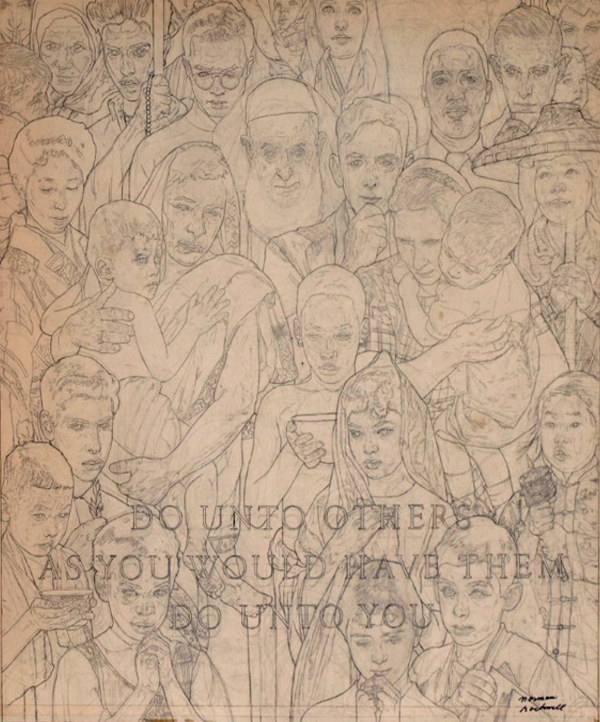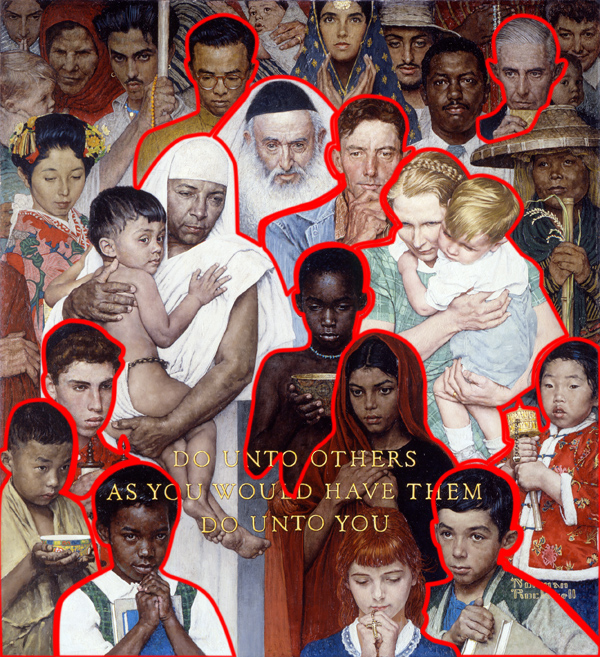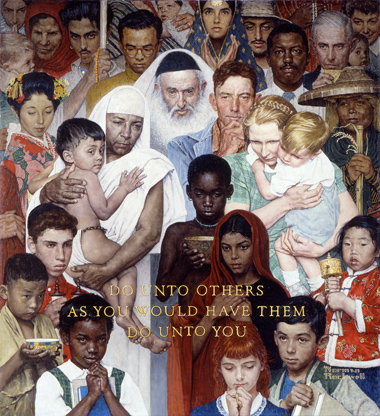I’d been reading up on comparative religion. The thing is that all major religions have the Golden Rule in Common. “Do unto others as you would have them do unto you.” Not always the same words but the same meaning.
— Norman Rockwell, The Norman Rockwell Album 1961


Click on the outlined figures to see the model...

From photographs he'd taken on his 1955 round-the-world advertising campaign trip for Pan American Airlines, Rockwell referenced traditional clothing and accessories and studied how they were worn. Gathered some cultural attire and devised some from ordinary objects in his studio, even using a lampshade as a fez.
Many of Rockwell's models were local exchange students and visitors. In a 1961 interview, Rockwell said of the man wearing a wide brimmed hat in the upper right corner, "He's part Brazilian, part Hungarian, I think. Then there is Choi, [who is] Korean. He's a student at Ohio State University. Here is a Japanese student at Bennington College and here is a Jewish student. He was taking summer school courses at the Indian Hill Museum School." Pointing to the rabbi, he continued, "He's the retired postmaster of Stockbridge. He made a pretty good rabbi - in real life, a devout Catholic. I got all my Middle East faces from Abdalla who runs the Elm Street market, just one block from my house." Some of the models were from Rockwell's earlier United Nations drawing. Though it was never finished, it was going to be a "a mass of people," he said, "representing the people of the world, waiting for the delegates to straighten out the world, so that they might live in peace and without fear."
